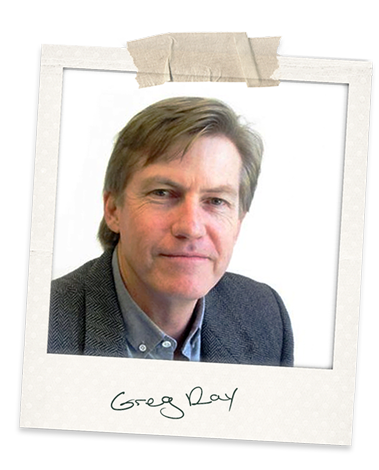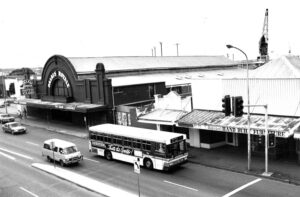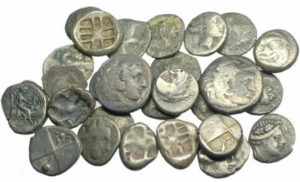The number of parking places at the city workplace had been cut. Now the workers found themselves squabbling over the remaining spots. They went to their boss and mentioned the issue. He thanked them for bringing his attention to the problem and, within hours, implemented his one and only solution. He had a plaque with his name placed on one of the parking spaces.
Says a lot about human nature. Faced with scarcity – real or anticipated – our first reaction is usually to take care of ourselves. I also recollect – and can’t forget – the time I was on a Pacific Island cruise. On one of the days of the cruise we were ferried by small boat to an uninhabited island where we were to spend the day picnicking. It took a few trips to bring out all the passengers who wanted to snorkel in the clear water and sunbake on the sand. The staff provided a very generous supply of cans of soft-drink and salad buns wrapped in plastic film. There was more than enough for everybody. But many of the people who were earliest in line for the food didn’t just take what they needed. They demanded more, in case they got hungry later. The staff looked troubled, but didn’t dare refuse. The result was that the food ran out and those later in the line missed out. Those with stockpiles sat on their towels on the sand and refused to meet the eyes of those they had unnecessarily deprived. I might add that many of the passengers chose also to leave their used plastic wrappers on the sand where they blew around and created a big job for the staff and for those sympathetic passengers who helped clean up.
If people think a resource is limited or can see that a resource is running out, they clamour to get as much of that resource as they can for themselves, even if they don’t really need it at that time.
Who owns the water?
On a recent trip to a rural area I noticed that the river on which the area relies for fresh water was running very low for the time of year. With very dry conditions predicted in the months ahead this appears an ominous sign. Perhaps the river will stop running. Perhaps the town will have to buy in water tankers. And yet dotted around the countryside, strongly contrasted against the dead brown of most of the dry fields, vivid green patches of irrigated paddocks stood out. Big irrigation systems straddled these areas and fine mists of water were being blasted into the hot midday air, much of it – I suspect – evaporating.
People I spoke to, farmers and others who were unable or unwilling to irrigate on a similar scale – murmured uneasily about this apparent profligacy. The farmers mentally tallied the megalitres and considered the river’s capacity, shaking their heads apprehensively. The non-farmers wondered why, with the river already so low, no water restrictions appeared to have been put in place. Was it right, they asked, in a situation of apparent looming scarcity, for some people to be taking such a lot from the river and dumping it on their fields and hillsides? I don’t know much about these things so I can’t really judge, but my gut feeling, for what it’s worth, was to feel distressed about the contrast between the struggling river and the hectic pumping I saw.
This may sound strange, but I have a similar feeling quite often just driving on our Australian roads. So much is said and written about the world’s problem with overconsumption of energy, especially in fossil fuel form, and the urgent need to become more efficient. And yet so many of the private vehicles surging on our roads are the American-style mega-utes. When they started appearing in noticeable numbers a few years ago I assumed the trend could not grow. After all, these vehicles must use more fuel than others, they occupy more road space and they are harder to park in busy areas. How wrong I was.
Tax breaks for mega-utes
Now these cars are a very conspicuous and domineering presence on the road, and it seems that planning authorities are being pressed to require parking spaces to be made larger to suit the new fashion of vehicular obesity. I saw an online poll asking people to vote “yes” or “no” on this issue and was a little surprised by the volume and intensity of the “yes” vote. The other day somebody shared a screenshot from a chat board where the owner of a mega-ute was complaining furiously about the parking situation at his workplace. He had deliberately parked across two spaces to try to ensure nobody put their vehicles too close to his, but somebody with a small car had parked near him anyway. He was angry that anybody would dare impinge on the space he had appropriated for himself and saw nothing wrong with trumpeting his anger online.
A friend with a small business explained to me that there were fantastic tax breaks for people like him who wanted to buy utes for their work, so he and all his mates were buying shiny mega-utes – in some cases only for their wives to drive around in. I don’t know if that’s a major factor in the growing number of these cars on the road. But many other people have commented that it’s become something of an “arms race”. Since the bigger cars are more likely to kill and maim pedestrians and people in smaller cars, the desire for protection from them is driving more and more people to up-scale to similar vehicles. Small, fuel-efficient cars now seem a really dangerous option.
Surely this is a foolish trend? From the points of view of energy efficiency, resource conservation, road safety and even land-use it defies reason. And yet, here we are.
Part of me wonders if this desire for bigger, greedier personal vehicles reflects the fears and insecurities that many of us feel these days, even if only subconsciously. In the post-truth world of pandemics, climate change, populist politics and deep tectonic shifts in the continental plates of empire, is the demand for intimidating monster trucks – like the similar apparent demand for fat-box mcmansions and mean pet dogs – a reflexive response from frightened creatures seeking security?
I don’t really know what it is, but blind Freddy can see that it isn’t sustainable.
Thank God Australians don’t yet have widespread access to handguns – touch wood.




Yes Greg, I agree with your sentiments on these trucks. They should not be on our roads if we have to change road rules or car park spaces to accommodate them.
I drive a small SUV and I find it almost impossible to see past these monstrosities at intersections so I cannot imagine how blind one would be in a small sedan.
I was in a friends Suzuki Swift recently and parked next to one of these trucks. From the passenger seat I was looking at the wheel arches. When are motoring organisations and governments going to wake up about these unnecessary vehicles.